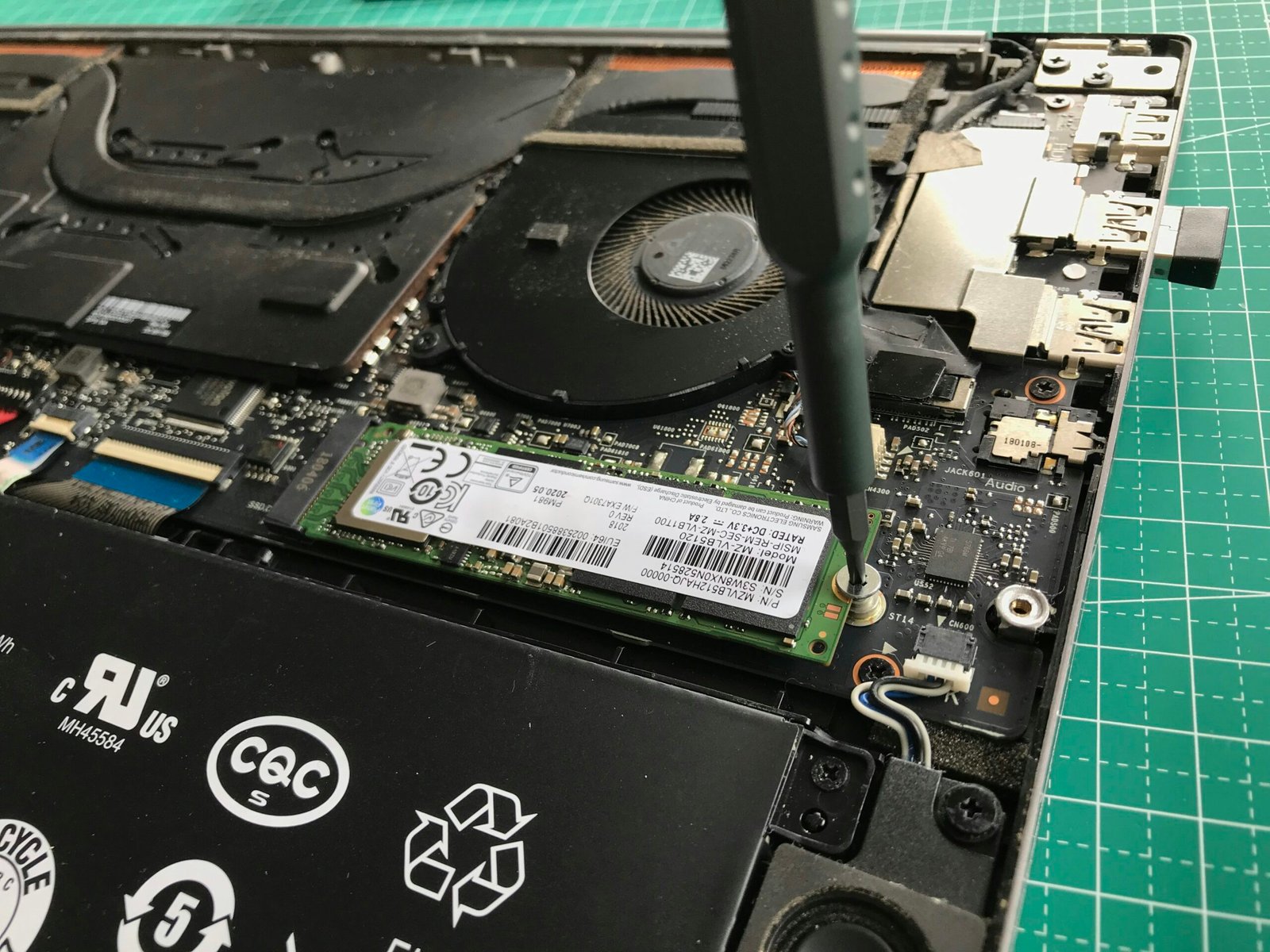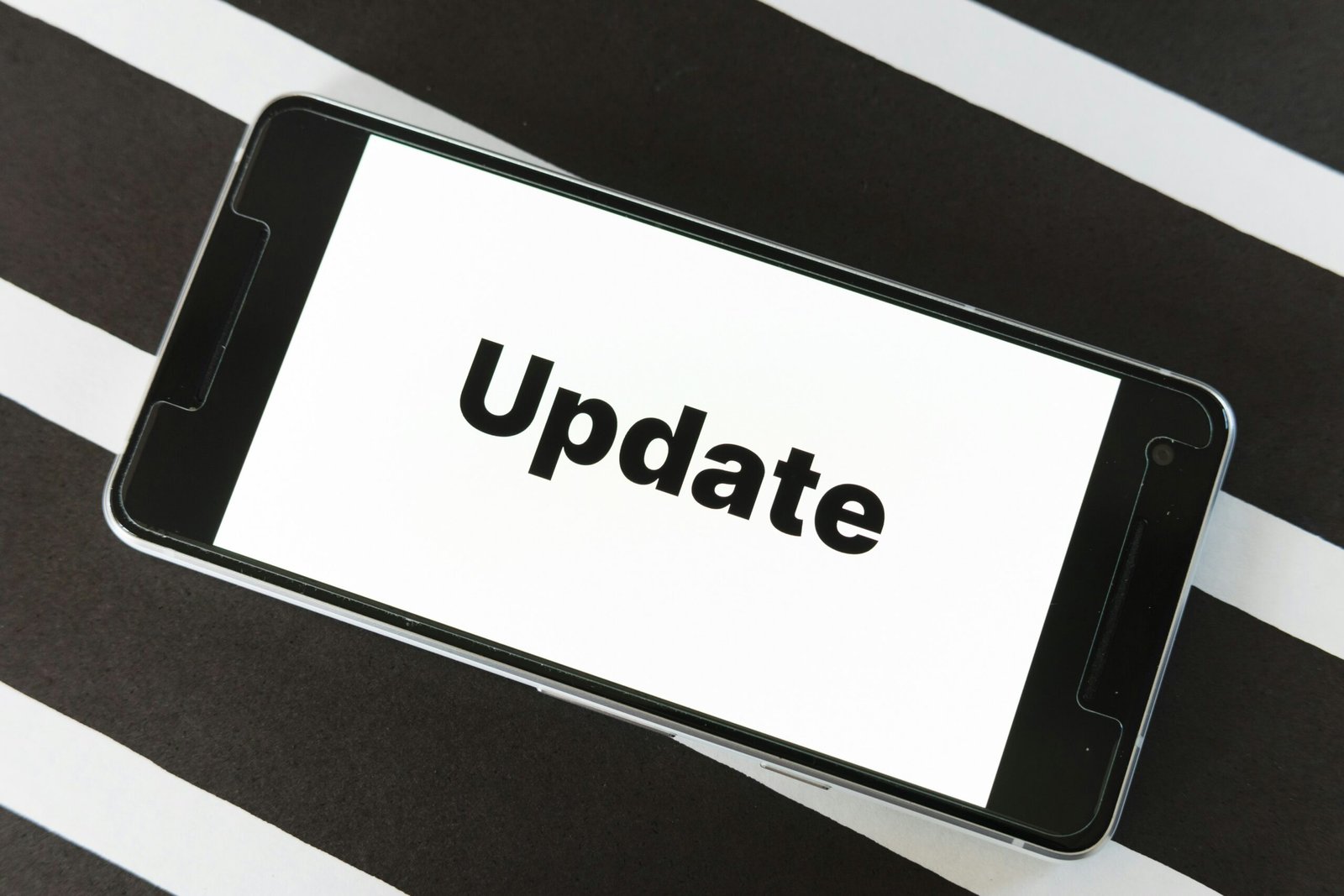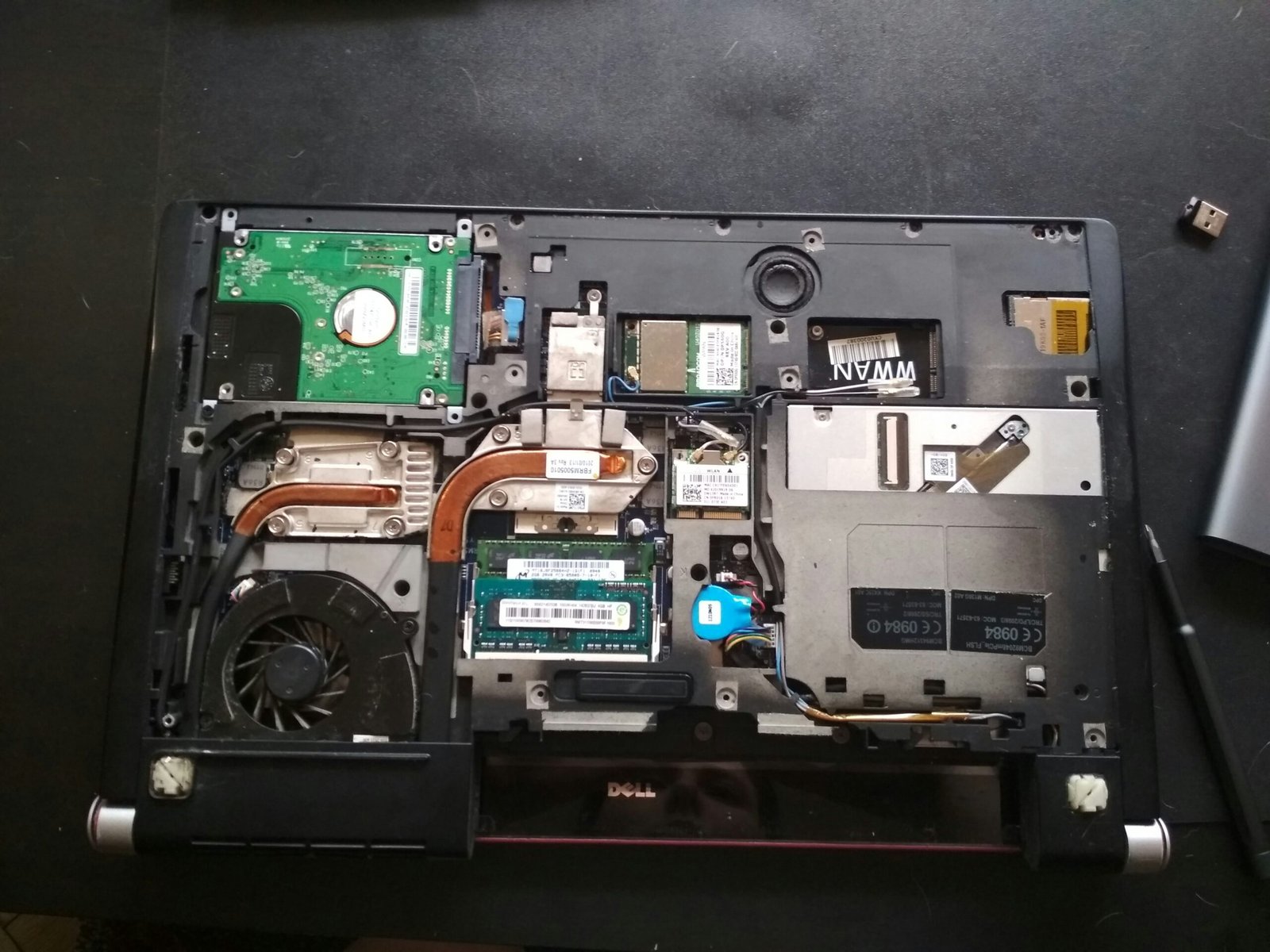
Understanding Laptop Slowness
Laptops, much like any electronic device, may experience reduced performance over time due to a mixture of hardware and software factors. One common reason for a laptop’s sluggishness is the aging of its components. Over the years, essential parts such as the processor, hard drive, and battery can wear out, which can severely affect operational speed. As technology evolves, new applications often demand more processing power, causing older laptops to struggle in accommodating these requirements.
Another significant factor contributing to laptop slowness is inadequate memory, or RAM. When a laptop does not have enough RAM to support the applications being run simultaneously, it resorts to using hard drive space as virtual memory, which is considerably slower. Insufficient memory hampers the laptop’s ability to perform multiple tasks efficiently and can lead to frequent freezes or crashes.
Fragmented files can also detract from a laptop’s performance. Over time, as files are saved and deleted, the hard drive can become cluttered with fragments of data scattered across various sectors. This fragmentation can cause longer load times when opening files and applications, as the system takes more time to locate and piece together these fragments.
Lastly, malware infections are a critical concern when discussing laptop slowness. Malicious software can consume system resources, interfere with processes, and initiate harmful actions that further degrade performance. Regularly scanning for and addressing potential malware threats is vital for maintaining optimal laptop performance.
Overall, understanding the underlying reasons for laptop slowness can aid users in addressing these issues effectively. By being aware of hardware aging, insufficient memory, fragmented files, and malware threats, users can take the necessary steps to enhance their laptop’s performance over time.
Identifying Symptoms of a Slow Laptop
As technology continues to advance, we often rely on laptops for various tasks, from work to leisure activities. However, a slow laptop can greatly hinder productivity and enjoyment. The first step toward addressing performance issues is recognizing the common symptoms associated with a sluggish laptop. Awareness of these signs can empower users to take corrective actions and implement potential optimization strategies.
One of the most recognizable symptoms of a slow laptop is longer boot times. If your device takes significantly longer than usual to power up, it may indicate underlying issues that require attention. This delay can stem from various factors, including an overloaded hard drive or outdated software, both of which can severely impact performance.
Another common indication of a lagging laptop is the sluggishness of applications. If programs take an unusually long time to open or respond, it demonstrates that the system is struggling to manage tasks efficiently. This can be frustrating and may disrupt your workflow, making the need for a thorough performance review imperative.
Unresponsive programs are a further sign of a slow laptop. If you frequently encounter applications that freeze or fail to close properly, it may be an indication of resource exhaustion or software conflicts. This issue often arises in computers that have insufficient memory or processing power to handle the tasks at hand.
Frequent crashes are among the most concerning symptoms. If your laptop often shuts down unexpectedly or restarts without warning, it may signal hardware failures or severe software issues. Such problems not only disrupt your work but can also lead to data loss if not addressed promptly. Recognizing these symptoms is essential for users who wish to enhance their laptop’s performance through effective optimization strategies.
Checking for Software Issues
A slow laptop can often be attributed to various software-related issues that compromise its performance. One of the most common culprits is the excessive number of background applications running simultaneously. When multiple programs are open at once, they consume significant system resources, including CPU and RAM, which can lead to a noticeable decline in speed. Regularly reviewing and closing unnecessary applications can help alleviate this issue and enhance overall laptop performance.
Another important factor to consider is the operating system (OS) version. Using an outdated OS may hinder your laptop’s capabilities, as software updates typically include performance enhancements and vital security patches. Ensuring that your operating system is up to date can not only improve speed but also protect your device from vulnerabilities. Additionally, it’s essential to remove any unnecessary programs that may automatically launch during startup. These programs can significantly increase the time it takes for your laptop to boot and may continue to run in the background thereafter, slowing down performance.
Regular software updates for all programs on your laptop are crucial. Developers frequently release updates that optimize performance and fix bugs, making Software maintainability critical for improving speed. Users should set aside time to periodically check for and apply these updates, as failing to do so can contribute to sluggish performance over time. To assist in cleaning up your software, consider using built-in system utilities or third-party cleaning tools that can help identify bloated applications and potential malware.
By systematically addressing these software issues, users can achieve a noticeable improvement in their laptop’s speed. Implementing these practices will create a more efficient computing environment, enabling users to accomplish tasks with greater ease.
Optimizing Hard Drive Performance
One of the primary reasons a laptop may operate at reduced speed is due to the performance of its hard drive. As files are created, modified, and deleted over time, the data on the hard drive can become fragmented. This fragmentation leads to slower access times, as the read/write head of the drive must move more frequently to access different segments of data. To address this issue, regular defragmentation of the hard drive can significantly enhance its performance. Windows operating systems include built-in tools to defragment traditional hard drives, which reorganizes the data to ensure it’s stored contiguously, thereby improving speed and efficiency.
In addition to fragmentation, insufficient storage space can also hinder a laptop’s performance. When the hard drive is nearing full capacity, the operating system struggles to allocate space for temporary files and processes, leading to slowdowns. Therefore, it’s advisable to routinely clean up disk space by uninstallation of unnecessary programs, deleting temporary files, and clearing the recycle bin. This routine maintenance can free up valuable space and lessen the burden on the hard drive, resulting in faster performance.
Upgrading to a Solid State Drive (SSD) can be one of the most effective ways to boost laptop performance. Unlike traditional Hard Disk Drives (HDDs), SSDs use flash memory, which allows for significantly faster data access speeds. Not only do SSDs reduce boot times, but they also enhance the overall performance of applications and multitasking capabilities. Although the initial investment for an SSD may be higher than that of an HDD, the long-term performance benefits often justify the cost. By optimizing hard drive performance through defragmentation, cleaning up disk space, and considering an upgrade to an SSD, users can ensure their laptop operates more efficiently and responsively.
Managing RAM Usage
Random Access Memory (RAM) plays a crucial role in the overall performance of a laptop. It serves as temporary storage for data that the processor needs to access quickly. When you open applications or files, they are loaded into RAM for faster retrieval. Thus, the amount of available RAM directly influences how efficiently your laptop can run multiple tasks simultaneously. If your system’s RAM is limited, it may struggle to handle demanding software and applications, leading to noticeable slowdowns.
To optimize your laptop’s performance, managing RAM usage is essential. One effective strategy is to close any unused applications. Many users unknowingly leave numerous programs running in the background, which consume valuable memory resources. By actively managing the number of open applications, you can free up RAM for the tasks that require it the most. Using built-in task managers or performance monitors can help identify which applications are using the most resources, allowing for informed decisions on what to close.
Another approach to enhancing your laptop’s RAM capacity is by upgrading the hardware itself. Many laptops allow for RAM upgrades, enabling users to add more memory. This increase in RAM can significantly improve performance, especially when handling resource-intensive applications like graphic design programs or video editing tools.
Additionally, consider utilizing lightweight alternatives to demanding software. For instance, if you primarily use a word processor, opting for a simpler, less resource-intensive application can reduce the strain on your RAM. These alternatives are often designed to perform the core functions required while consuming fewer memory resources.
By effectively managing RAM usage through these strategies, you can greatly enhance your laptop’s speed and overall performance, ensuring it operates efficiently for various tasks.
Detecting and Removing Malware
Malware, which encompasses viruses, spyware, and other malicious software, can significantly hinder the performance of laptops. These unwanted programs operate covertly, consuming system resources and leading to noticeable delays in operation. Recognizing the detrimental effects of malware is essential for maintaining an efficient and responsive device. Symptoms of malware infection often include sluggishness, unexpected crashes, and an increase in pop-up ads. Users may also notice unfamiliar programs running at startup or abnormal internet activity, which serve as telltale signs of a potential malware issue.
The first step in addressing malware-related problems is to utilize reliable antivirus software. Upon installing such software, it is advisable to run a comprehensive scan of the entire system. This will help detect any existing threats and provide insights into the severity of the infection. Many antivirus programs include real-time protection, which actively monitors for suspicious activities, offering a solid line of defense against both existing malware and new threats. Regularly updating this software is crucial, as new malware variants are continuously being developed, and keeping your antivirus program current ensures up-to-date protection.
After running a scan, follow the recommended actions provided by the antivirus software. In many cases, it may suggest removing or quarantining problematic files. Be sure to regularly conduct system scans as part of your maintenance routine. Furthermore, consider implementing preventative measures such as avoiding unverified downloads and being cautious about suspicious email attachments, which are common vectors for malware infection. A proactive approach to system security not only aids in the early detection of potential threats but also contributes to a cleaner, faster laptop. By maintaining vigilance regarding malware, users can significantly enhance their laptop’s performance and overall longevity.
Adjusting Power Settings
One important aspect that can significantly influence the speed of your laptop is its power settings. Many operating systems, including Windows and macOS, offer various power plans that can be tailored to meet individual performance and energy-saving needs. Understanding these power plans is crucial to optimizing your laptop’s performance.
Typically, laptops come pre-installed with a few standard power plans, such as Balanced, Power Saver, and High Performance. The Balanced plan is designed to provide a good mix of energy efficiency and performance, making it suitable for general use. However, when your laptop is slowed down by demanding tasks, switching to the High Performance plan can offer immediate benefits. This setting ensures that your computer prioritizes processing power over energy conservation, effectively enhancing your laptop’s speed.
On the other hand, the Power Saver plan may be ideal for everyday tasks that do not require maximum performance, such as web browsing or document editing. While this plan helps extend battery life by reducing processor speed and dimming the screen, it can also lead to sluggish performance during activities that demand greater resources. Therefore, it is essential to evaluate your current workload and adjust your power settings accordingly.
To optimize your laptop’s performance further, consider customizing the advanced power settings. Users can modify options such as the minimum and maximum processor state and the sleep settings. For instance, setting the minimum processor state to a higher percentage can prevent throttling during intensive tasks. This adjustment can be particularly helpful for users who frequently perform heavy computations, graphics rendering, or gaming.
In conclusion, selecting the appropriate power settings and fine-tuning the advanced options can dramatically improve your laptop’s speed and responsiveness, effectively balancing performance requirements with energy efficiency.
Cleaning Hardware Components
Maintaining the physical hardware components of your laptop is crucial for ensuring its longevity and performance. Over time, dust and debris accumulate within the device, affecting its efficiency and leading to a slowdown in functionality. One of the primary concerns is overheating; a buildup of particulate matter can obstruct ventilation, causing the internal temperature to rise and the system to throttle performance to prevent damage. Regularly cleaning your laptop can significantly alleviate this issue and enhance overall performance.
One of the key areas that require attention is the vents. To clean the vents safely, it is advisable to use compressed air. Hold the canister upright and direct the nozzle into the vent openings, giving several short bursts to dislodge any dust without forcing it further inside. This method not only helps clear blockages but also ensures there’s adequate airflow, which is essential for preventing overheating that can slow down your laptop.
Next, the keyboard often accumulates crumbs and dust, which can hinder performance and create an unpleasant typing experience. A gentle approach is necessary; consider using a soft brush or a microfiber cloth for this task. You can also use compressed air to help displace particles from between the keys. It’s advisable to do this while the laptop is turned off to prevent any accidental key presses.
Finally, the screen of your laptop requires regular cleaning as well. A microfiber cloth lightly dampened with water or a suitable screen cleaner can effectively remove fingerprints and smudges without damaging the display. It is important to avoid harsh chemicals that could strip protective coatings.
Incorporating these cleaning practices into your regular maintenance routine will help maintain the essential performance of your laptop, thereby preventing slowdowns caused by hardware congestion and overheating.
When to Consider Upgrading or Replacing
Determining whether to upgrade or replace a slow laptop can often be a challenging decision for users. A range of signs may indicate that a laptop is nearing the end of its useful life or is incapable of being effectively optimized. First and foremost, frequent hardware failures may serve as a primary indicator. If a laptop continuously experiences issues such as hard drive failures, overheating, or malfunctioning components, it may be unwise to spend additional resources on repairs. The cost of ongoing repairs can quickly accumulate, making replacement a more financially viable option.
Another vital consideration is performance. If certain essential tasks—such as running the latest software applications or multitasking—become increasingly difficult, it might signify that a laptop’s hardware is outdated. For example, older processors or insufficient RAM can significantly hinder performance; if the laptop cannot be upgraded with newer components effectively, it could be an indicator for replacement. Additionally, slow boot times, frequent crashes, and lag during routine activities also highlight the possibility that the laptop may no longer meet the user’s needs.
Budget considerations are crucial as well. Users should evaluate their financial situation when contemplating whether to invest in upgrades or a new laptop. If the cost of repairs approaches or exceeds the cost of purchasing a newer model, it might be more pragmatic to replace the device. Finally, personal needs and intended uses should play a significant role in the decision-making process. Assessing how a laptop will be used—whether for advanced gaming, graphic design, or simple tasks—can help users determine the features and specifications necessary in a replacement machine.
Ultimately, recognizing the signs of an aging or insufficient laptop is essential for making informed decisions about whether to upgrade or invest in a new device entirely.








